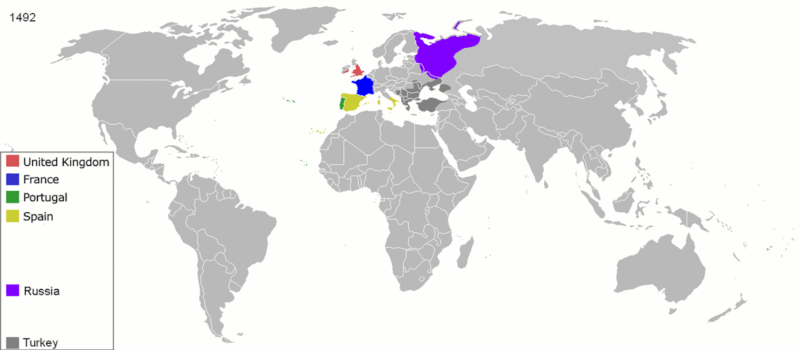On the Building Blocks of History
The debate on studying patterns of historical narratives
Hello reader,
My husband asked me why did I choose to write about history today. I told him because it’s fascinating. But just now I remembered what I really wanted to tell him: History is the richest pool of patterns that shape our world in profound ways.
“Whoever wishes to foresee the future must consult the past; for human events ever resemble those of preceding times. This arises from the fact that they are produced by men who ever have been, and ever shall be, animated by the same passions, and thus they necessarily have the same results.” —Machiavelli
There is an amusing debate in the field of history: should history revolve around the collection and validation of all facts that constitute a narrative, or should history as a field analyze narratives for the patterns they may reveal to us?
To illustrate, every colonial expansion has a very unique story. Yet every episode of them has some of the same facets: 1- a sovereignty with power, greed, a neighborhood of competing states, 2- a land of a less developed civilization with an alluring color of gold (spices, diamonds, cacao, straits …), and 3- a long list of bloody confrontations. Are patterns more, less or equally valuable to individual accounts?

When studying patterns, the scientific method is often employed. First, we formulate a hypothesis on the existence of a pattern, like how the high price of bread is often indicative of a revolution against a dictatorship. Then we define how to measure the pattern. After which we abstract events as a collection of observations and then validate or reject the hypothesis. I am, of course, oversimplifying the method, and patterns can be studied without quantitative methods.
When Bertrand M. Roehner and Tony Syme wrote “Pattern and Repertoire in History” in 2002, they revitalized the debate on studying history as a collection of elements and phenomena repeating themselves. They propose a methodology on analyzing events and breaking them into “building blocks” that constitute history —building blocks such as strikes, wars, or revolutions. They illustrated their concept by drawing the parallels between the French and American revolutions, arguing that they have the same “patterns”, yet their components or actions come from a “repertoire” of behaviors confined by cultural, religious, societal or other contextual attributes (e.g. agitation of the peasants). They argue that comparative history should be treated as a field of its own with an evaluation scheme appropriate to their scientific methods (such as quantification/correlation).
This path of scientific analysis of historical data has been critiqued for over-simplification. But isn’t all theory over-simplified?
Still, some historians argue that individual accounts should be treated individually with little attempt to paint the profile of all possible phenomena. Why? They argue that by attempting to abstract events into unified theories you lose a lot of essential contextual details. For example, every colonial expansion is different and each has a narrative, and lesson, of its own.
This same schools of thought leans into to equating the importance of all facts into an objective layer, noting: “actually, it’s more complicated.” This article cites this problem and explores the merits and caveats of using complexity theory as a tool for understanding history. Complexity theory builds our understanding on complex systems, which compose of many different agents or elements seeking different objectives/drives, that interact with each other having no central control. These complex systems give birth to new properties with time. It’s a useful tool in understanding the shadiest complex social science.
Rejecting patterns for their lack of detail is contrary to how history is often remembered. I.e. using abstractions to organize and classify a collection of facts is something that is often used in the field of history. Take ‘periods’ as an example. Historians give eras a name in order to make sense of the overarching theme at that time, e.g. Renaissance, Golden Age, Iron Ages, Song Dynasty. The simplified summarization of facts under one ‘label’ is no different in concept from doing it under a ‘pattern’.
By expanding the pool of comparative history, more people will remember events as patterns with high probabilities, rather than events as a thing of the past.
“Those who do not remember the past are condemned to repeat it.” — George Santayana
Growing Meta is a semi-weekly letter tackling real-world topics from meta angles, such as complexity, analysis or the future. I dedicate time in my weekends to read and share point-of-views that are relevant to how our world is shaped. I also share some of my thoughts on Twitter @NajlaAlariefy.
Have a great week!
Najla

